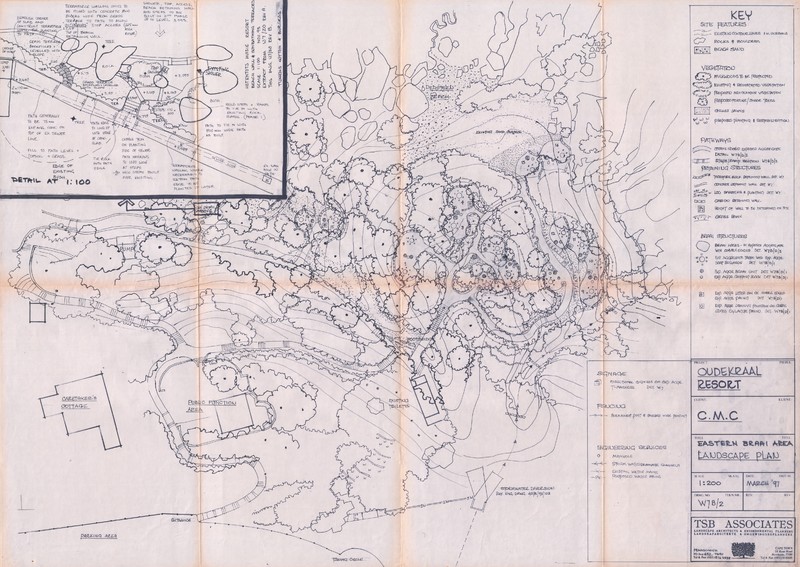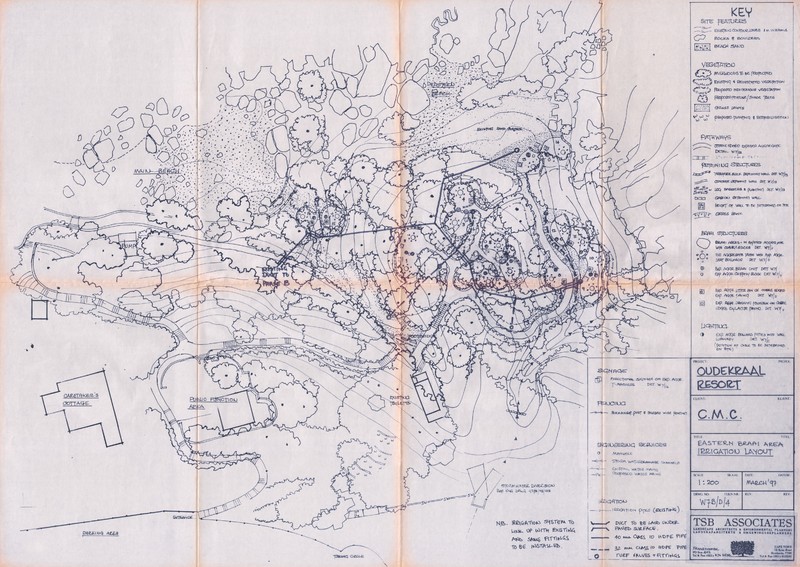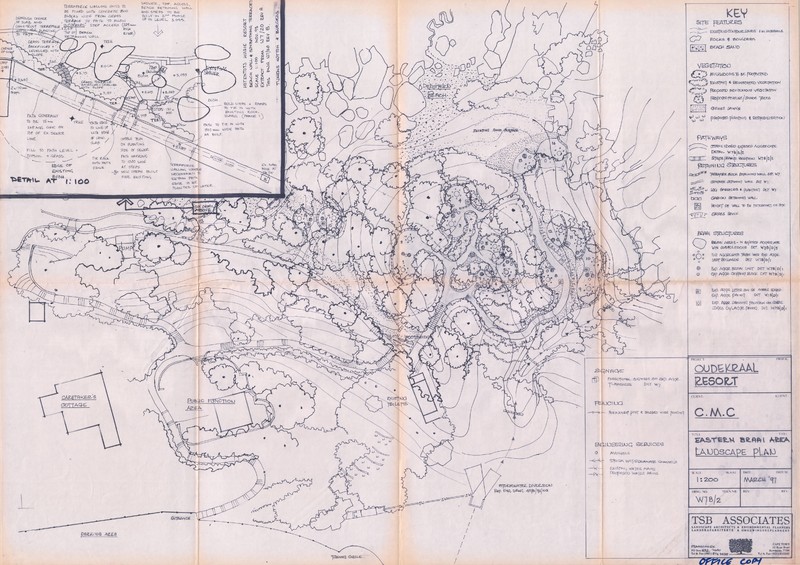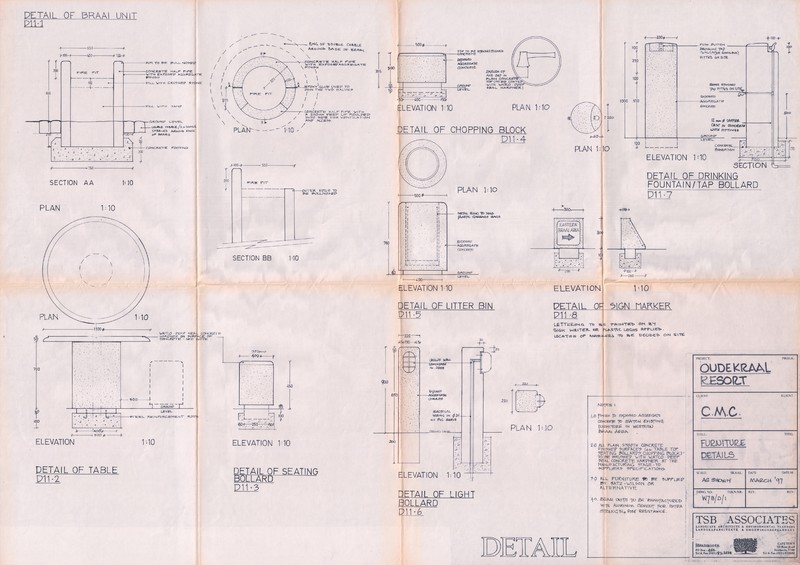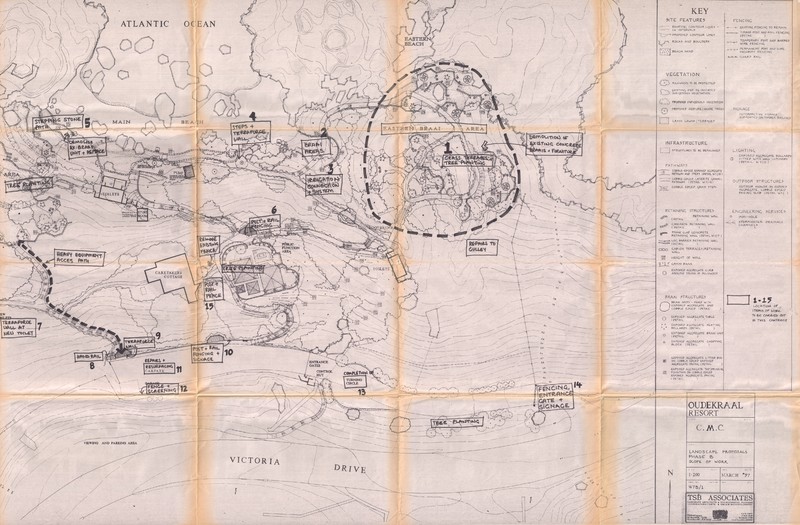Oudekraal Beach, Table Mountain National Park
Ann Sutton was responsible for the landscape architecture at Oudekraal Beach, with its picnic areas and trails and car parks integrated into the dramatic Atlantic coastline environment on the slopes of Table Mountain.
Not far from the crowd favourites like Camps Bay and Clifton, Oudekraal Beach is tucked away in a cove. It has historical and spiritual significance for the Muslim community: from the turn of the 18th century it was used as a refuge for slaves who had escaped from the colonial authorities and their masters. Among them were Muslim spiritual leaders who had been captured and brought to the Cape after leading uprisings against slavery in the Dutch East Indies. The Oudekraal ravines provided seclusion and safety for them and allowed them to teach their disciples and keep Islam going in the Cape.
The project was completed over two decades ago, the remains popular today. The parking lot sits above the beach with a boma and braai area for functions, and a general braai area right above the beach. The layering means that the views are not interrupted and the sections are kept separate and private by the milkwood trees. The small sandy beach is surrounded by boulders that shelter the cove, creating a swimming area with gentle swells that are easy to swim through.
Just above the beach to the left is a grassy area with braai places for afternoon picnics. Sutton’s designs included the construction of all the public utilities – picnic benches and tables, shade structures, benches, walls and bollards. ‘It wasn’t just a bench or a bollard – sometimes she would integrate or hyphenate these elements to create integrated multi-functional structures like a wall-bench,’ says Mputa.



